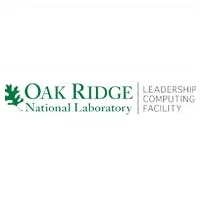overview
The Oak Ridge Leadership Computing Facility (OLCF) was established at Oak Ridge National Laboratory to accelerate scientific discovery and engineering progress by providing world-leading computational performance and advanced data infrastructure. As a US Department of Energy (DOE) Office of Science User Facility, the OLCF offers leadership-class computing resources to researchers from government, academia, and industry who have many of the largest computing problems in science.
The new library has just shy of 14,000 slots for tapes. We were able to easily move all 70 petabytes of existing data into the new system and have grown to 104 petabytes in size and have plenty of room for at least a year or two before we have to start thinking about expanding.
HPC Linux Systems Engineer, OLCF
The Challenge
OLCF tape libraries primarily store user data accumulated from applications run on the Summit supercomputer and the now retired Titan supercomputer, as well as some information from other OLCF computing resources and different user facilities. Although tape drives and other individual storage components are typically replaced about every 5 years, libraries can operate much longer. Updates are periodically required to incorporate new technologies and enhance efficiency. Most of the OLCF’s six existing systems had been operating for 10 years or longer, making this large-scale upgrade an infrequent and significant undertaking.
The Solution
At the Oak Ridge Leadership Computing Facility (OLCF), the Archive team in the HPC Operations Group replaced the previous tape libraries with a new library system produced by Spectra Logic Corporation. The Spectra Logic system will improve storage efficiency by consolidating data from all of the OLCF’s current data storage systems into this single library, reducing the physical footprint by 85 percent. Still, the system will be capable of holding over 150 petabytes of data, and the compact configuration provides the team with substantial space to eventually expand the machine to a maximum capacity of 1.52 exabytes.
Environment Snapshot
- 17-frame Spectra® TFinity ExaScale Tape Library
- 85 IBM® TS1155 tape drives
- Two High Performance Transporters (HPT)
- BlueScale® Vision Camera
- BlueScale® Standard Encryption
- High Performance Storage System (HPSS) software





